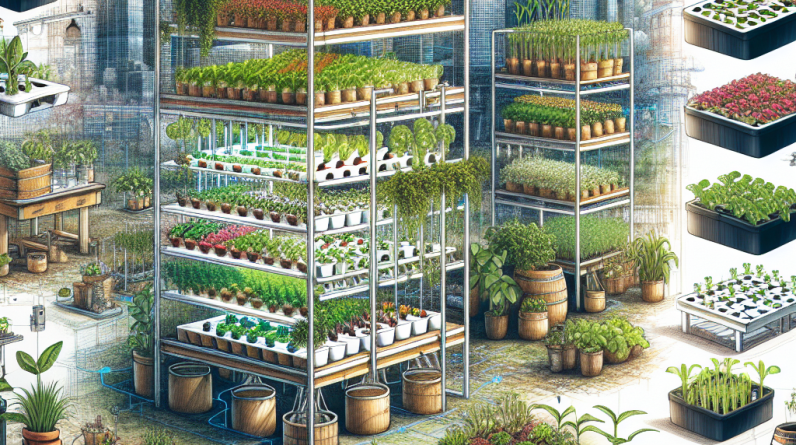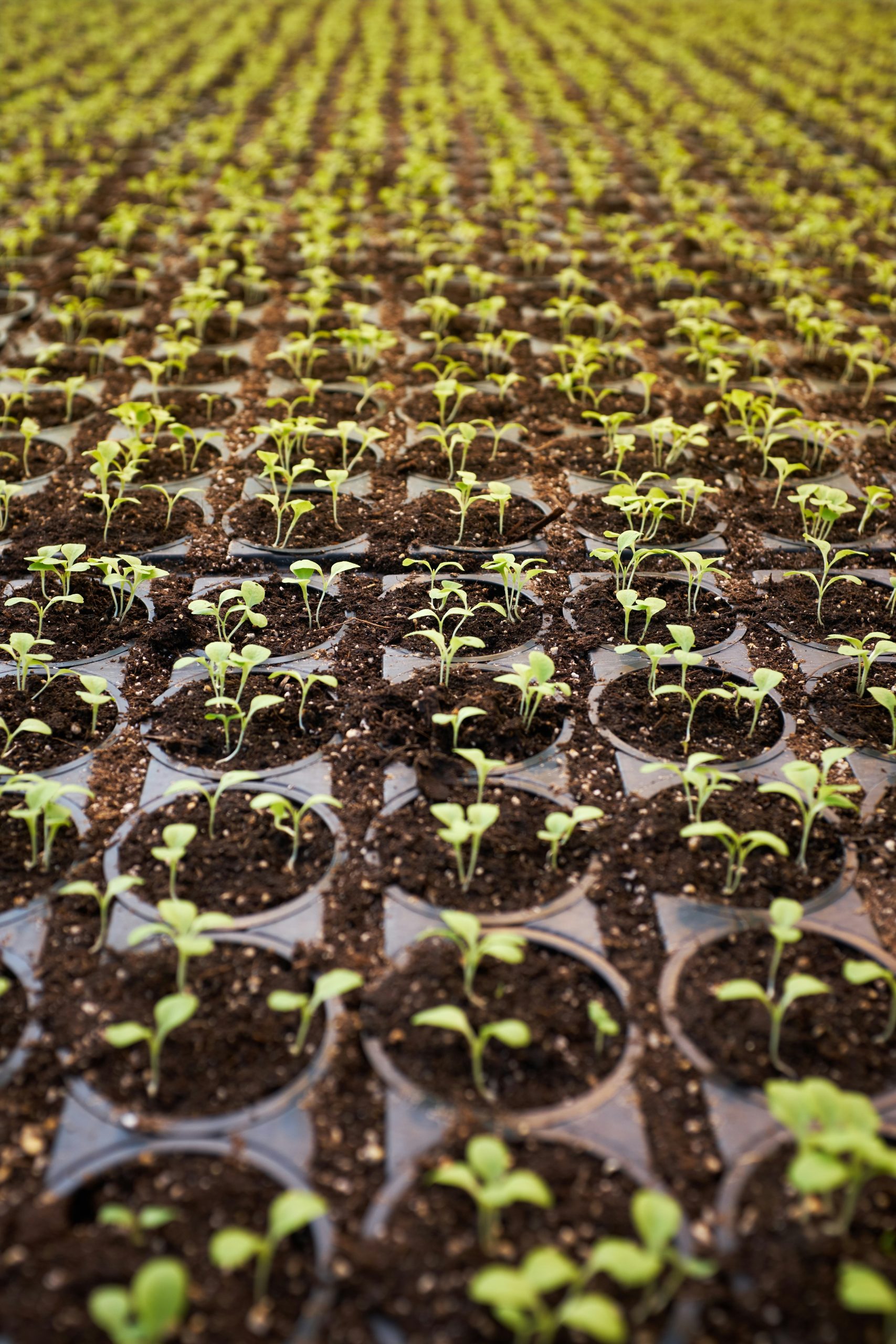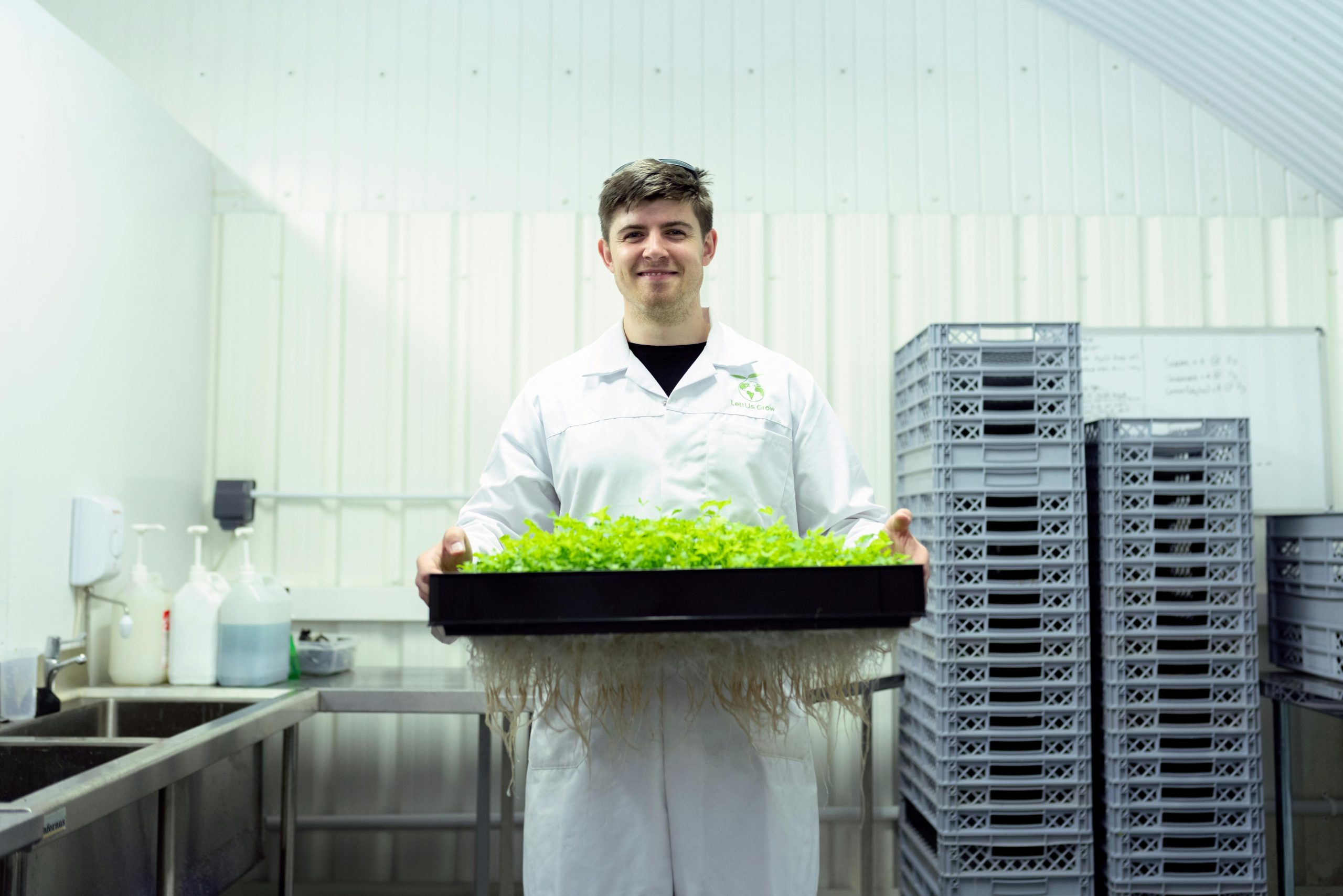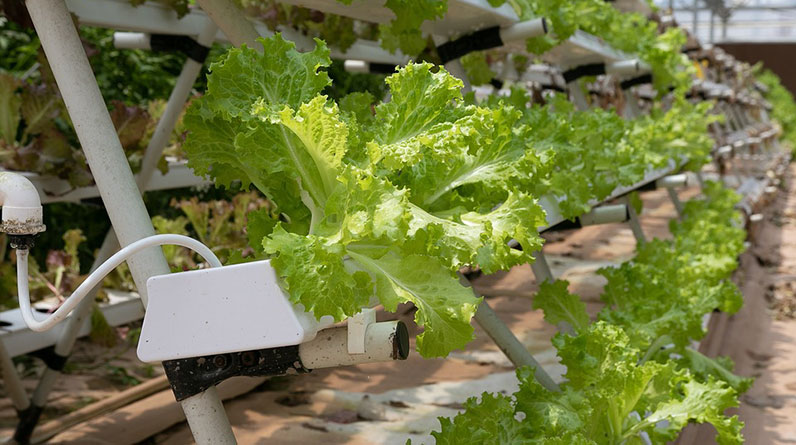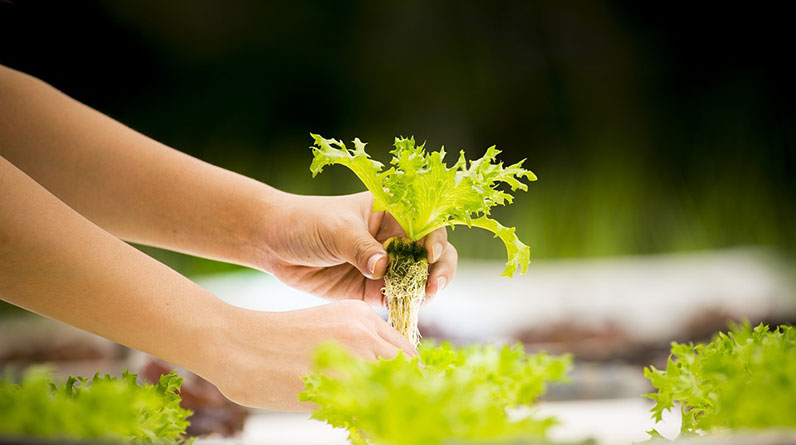
1. Understanding Hydroponics
What is Hydroponics?
Hey there! So, let’s dive into what hydroponics really is. In simple terms, hydroponics is growing plants without soil. Yep, you heard that right! Plants are instead provided with nutrient-rich water, which allows them to absorb what they need directly. This method might sound a bit futuristic, but I promise you, it’s been around for a while.
I recall my first encounter with hydroponics; I was fascinated by how plants were thriving in these systems. Instead of being buried in dirt, they were just floating in water. It definitely got me thinking about how we could change the way we approach agriculture.
The real beauty of hydroponics lies in its efficiency. Plants can grow faster, and you can produce more in a smaller area. Plus, there’s less chance of pests wreaking havoc. It’s a real game-changer for modern farming!
Types of Hydroponic Systems
Now that we’ve got the basics down, let’s chat about the different hydroponic systems out there. There are quite a few types, but some of the most popular ones include Nutrient Film Technique (NFT), Deep Water Culture (DWC), and Ebb and Flow systems. Each has its own fan base and benefits.
I’ve personally experimented with a few of these systems, and what I found is that the type you choose can really depend on the crops you’re growing. For example, if you’re after leafy greens, DWC is often the go-to due to its simplicity and reliability.
It’s also crucial to do your research and experiment a bit. What works in one setup might not work in another, but that’s part of the fun of it! The complexity can give you a real sense of accomplishment when things go right.
The Science Behind It
Alright, let’s get a bit nerdy! Hydroponics works off the principle of plants needing three main things: water, sunlight, and nutrients. The water is infused with minerals and nutrients that plants require for growth. This means there’s no soil to filter out the nutrients, and plants get exactly what they need without competition.
When I first started using a hydroponic system, I was blown away by how quickly my plants began to grow. I realized that with the right balance of nutrients, light, and water, plants thrive incredibly well! It actually feels a bit magical.
Understanding the science behind hydroponics is not just beneficial, it’s essential if you want to be successful. If you know what each nutrient does and how it impacts growth, you’ll have a leg up on anyone who’s just winging it. Plus, it gives you more confidence as you troubleshoot and experiment.
2. The Environmental Impact
Water Conservation
One of the first things that struck me about hydroponics was its potential for water conservation. Traditional farming requires a boatload of water, often much more than hydroponics does. By using a closed-loop system, you can recirculate water and drastically reduce waste.
I remember my friend who started a hydroponic greenhouse. They reported using about 90% less water than soil farming. It’s mind-blowing how we can grow food and ensure we protect our precious water resources at the same time!
Moving forward, as climate change continues to pose challenges to water supply, methods like hydroponics present scalable solutions that can keep us growing food sustainably and effectively.
Reducing Land Usage
An interesting aspect of urbanization and hydroponics is how they marry together. Hydroponics allows us to use less land, making it easier to farm in urban settings. I’ve seen rooftop farms thriving in busy cities, completely transforming the landscape!
This means we can produce food closer to where it’s consumed. No more lengthy transport journeys wasting energy and resources. When you think about it, it’s a win-win situation—people get access to fresh produce, and we keep the environmental footprint low.
Plus, think of all that vacant land in urban areas that can be transformed into productive gardens. Hydroponics helps in maximizing space while also promoting local food systems. Seriously, it feels good to be part of a movement that’s shifting the narrative on food production.
Minimizing Pesticides
Another fascinating perk of hydroponics is that it allows for significantly less use of pesticides. Since plants grow in a controlled environment, the chances of pests and diseases can be reduced dramatically. My first hydroponic project was pest-free, which was a huge relief!
The key here is being proactive with sanitation and environmental control. If you’re treating your plants well, pests just don’t see a need to crash the party. Plus, consumers are well aware of the need for chemical-free produce, so this aspect can really make hydroponically grown food attractive.
The bottom line? Reducing pesticide usage is not only better for the produce but also for our health and the environment. I tend to lean into many organic practices, and hydroponics fits right in with that lifestyle choice!
3. Economic Opportunities
Cost Efficiency
Let’s talk money for a sec—because at the end of the day, someone’s gotta pay for the groceries. Hydroponics can be incredibly cost-efficient. By producing food locally, you can save on transportation costs, and since you’re using fewer resources, the whole operation can be more sustainable financially.
When I set up my own little hydroponic garden, I was able to grow my greens without breaking the bank. On top of that, there’s the potential for vertical farming, which maximizes yield per square foot—talk about squeezing in profit!
Being able to potentially control costs while still contributing to sustainability is a super empowering feeling. This idea of growing food with less expense makes hydroponics not just a green option but a smart financial move, too.
Job Creation
Moreover, the rise of hydroponics opens up new job opportunities. Think about all the expertise needed for these setups—engineers, agronomists, salespeople. I’ve seen new businesses popping up that focus entirely on hydroponic technologies, contributing to local economies.
Communities give support to these ventures, fostering growth and innovation. People are keen to learn more about sustainable practices, and hydroponics is leading the charge. It’s a way of introducing new skills while energizing the local workforce.
So whether you’re interested in growing this industry or just backing local businesses, hydroponics gives us something to rally around. It’s a community initiative that can uplift everyone involved!
Market Demand
Let’s face it, consumers are becoming more conscious about what they eat. There’s a growing demand for fresh, local food, and hydroponically grown crops meet this criteria beautifully. I’ve seen farmers at local markets proudly showcase their hydroponic produce, and the interest is often palpable!
This demand is not just limited to grocery stores; restaurants are also looking to get their hands on fresh, local ingredients, and hydroponics satisfies that need perfectly. This makes it an exciting time to delve into hydroponics—it’s not just a trend; it’s a booming market!
As we look ahead, tapping into this demand means that those involved in hydroponics can carve out a niche that’s sustainable, both environmentally and financially. It’s an exciting prospect for entrepreneurs looking to make a difference.
4. Innovations in Hydroponics
Technology Integration
Oh man, talk about tech taking over agriculture! With the rise of hydroponics, we’re seeing tons of innovation, from automated nutrient delivery systems to smart environmental controls. When I first invested in some of these technologies, it felt like I was stepping into a sci-fi movie!
These technologies allow for real-time monitoring and adjustment of the growing conditions. This means you can optimize growth without any guesswork. It’s like having a magic wand for your plants—how cool is that?
Staying updated about tech developments in hydroponics can be your secret weapon. Companies continually push the envelope, and if you catch a trend early, it can give you that edge. So, keep your eyes peeled for what’s coming next!
Research and Development
Researchers are diligently working to explore the potentials and efficiencies of hydroponics. This field has come a long way, and you can bet there’s still a boatload to learn. Areas like genetic modification and plant breeding are also being analyzed to see how we can enhance crop yields even further.
It feels inspiring to watch these advancements unfold. Hydroponics isn’t just a fad; it’s truly evolving. The more that scientists dive into the intricacies of plant biology, the better our systems become, making them even more effective.
If you’re passionate about agriculture or even just curious, diving into the research side can be a rewarding experience. You’ll find yourself part of a larger conversation about how we can sustain our populations effectively.
Future Trends
Looking ahead, it’s wild to think about where hydroponics will go next. With increasing urbanization and food demand, staying ahead of the trends is essential. I find myself excited about vertical farms and their potential to shake the farming paradigm!
think about cities filled with green walls and rooftop gardens everywhere. It doesn’t feel far off, does it? The inclination towards sustainable practices means that hydroponics could become a norm rather than an exception.
Keeping your finger on the pulse of what’s next not only keeps you informed but also opens up new avenues for involvement. Whether you’re an enthusiast, a grower, or a researcher, the future of hydroponics is bursting with possibilities!
5. Challenges and Considerations
Initial Setup Costs
Okay, let’s be real—starting a hydroponic system can come with some price tags that demand attention. Whether it’s equipment or setup, it can require a decent investment upfront. When I started my journey, I was shocked by how much it cost to get the basics in place!
But here’s the thing: while the initial costs can scare some people, it’s essential to view it as a long-term investment. Think of the money you’ll save on water and resources down the line. Additionally, grants and funding opportunities for sustainable practices can help ease that financial burden.
In short, if you approach it strategically, hydroponics can balance out in the financial department. Prepare yourself for the costs, but also eye the potential savings because they are there!
Maintenance and Skills
Another challenge I faced was maintaining my hydroponic system. It’s not just a set-it-and-forget-it type of deal. You need to monitor nutrient levels, adjust pH, and watch out for any signs of disease. It’s a bit of a responsibility, but one that’s so worth it!
It isn’t just about setting up the system—you’ve got to educate yourself to stay successful. Luckily, there are heaps of resources, videos, and forums where you can learn from seasoned pros. It’s a community of knowledge, and everyone helps each other out.
Ultimately, if you’re curious, willing to learn, and ready to roll up your sleeves, you’ll find the maintenance side rewarding. It’s a journey of growth, both for your plants and for you!
Market Acceptance
This might sound like a ‘duh’ point, but there can be hurdles when it comes to market acceptance of hydroponics. Some folks doubt the flavor or quality, especially if they’re used to traditional methods. When I first started selling my produce, I encountered some skepticism.
But here’s where persistence comes in. Educating consumers about the benefits and quality of hydroponically grown food is super important. Once they get a taste, it’s hard for them to say no. I sold my first batch to friends, and they were hooked!
Spreading the word, offering samples, and engaging with your community will help bridge that gap. Hydroponics is definitely gaining popularity, and with more awareness, it will only grow stronger!
Conclusion
So there you have it—the multifaceted role of hydroponics in modern agriculture. From understanding the basics to tackling challenges, this method of growing plants presents a plethora of exciting opportunities. Whether you’re intrigued by the technology, want to make an environmental impact, or dive into the economic benefits, there’s a place for you in this innovative field.
If you’re considering jumping into hydroponics, go for it! It’s a community-driven journey filled with learning, growth, and hopefully, some delicious food along the way.
FAQ
1. Can I grow any type of plant using hydroponics?
While many plants can thrive in hydroponic systems, leafy greens like lettuce and herbs tend to do particularly well. However, with the right setup and care, you can grow fruits and vegetables, too!
2. What are the basic supplies I need to start a hydroponic system?
To get started, you’ll generally need a hydroponic growing system (like NFT or DWC), nutrient solution, grow lights (if indoors), and a monitoring kit for pH and nutrient levels. It’s all about having the right equipment to ensure success!
3. Is hydroponics suitable for small spaces?
Absolutely! Hydroponics is perfect for small spaces, from balconies to indoor setups. You can utilize vertical gardening techniques to optimize space and still grow a bountiful harvest.
4. How often do I need to take care of my hydroponic garden?
The frequency depends on the system and plants you’re growing, but you generally need to check nutrient levels and pH at least once a week. Regular maintenance is key to keeping your plants healthy and thriving!
5. Are hydroponics really better for the environment than traditional farming?
Yes! Hydroponics typically uses less water, fewer pesticides, and can reduce land usage significantly. This makes it a sustainable method that helps preserve natural resources while still providing fresh produce.


